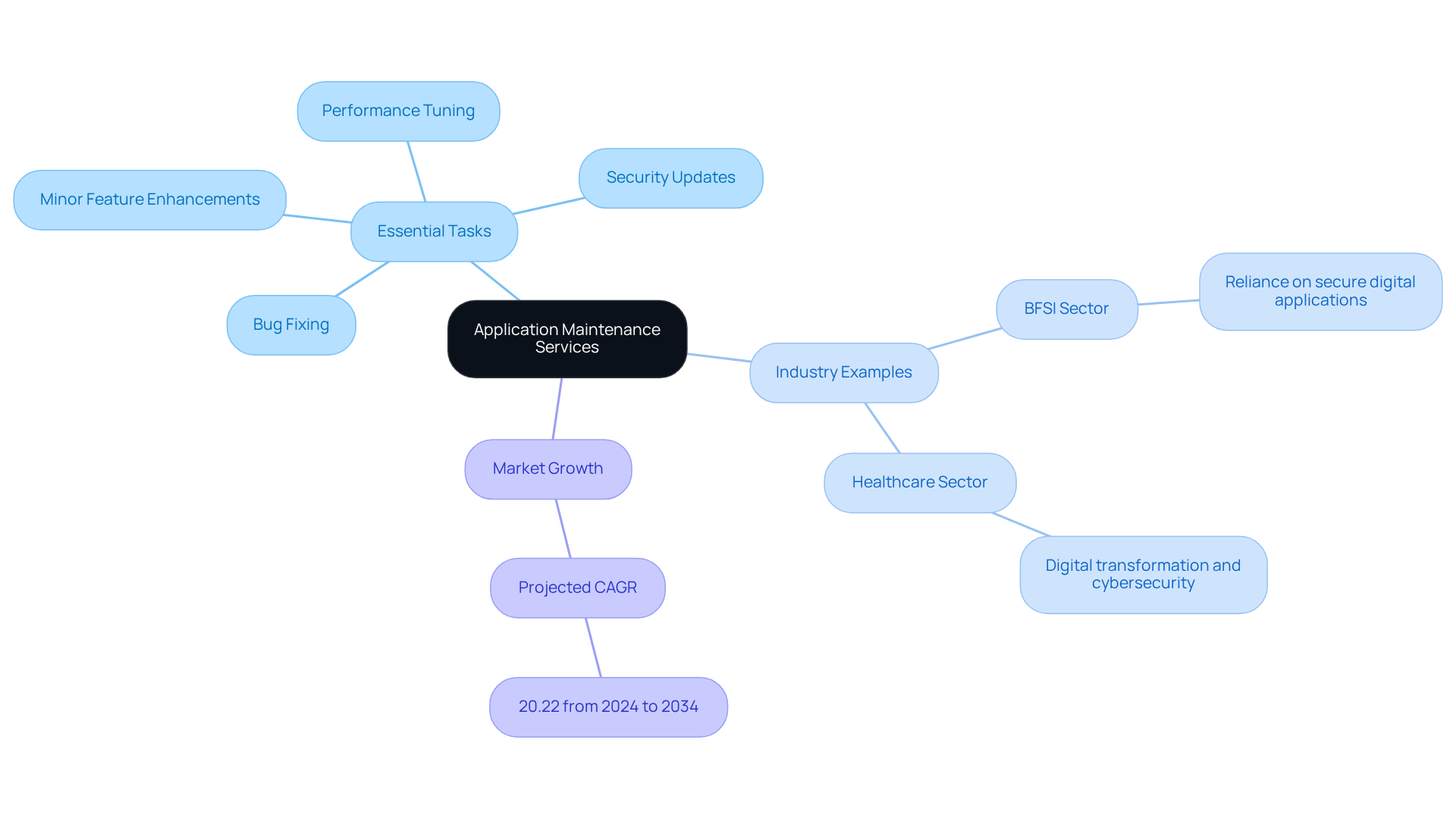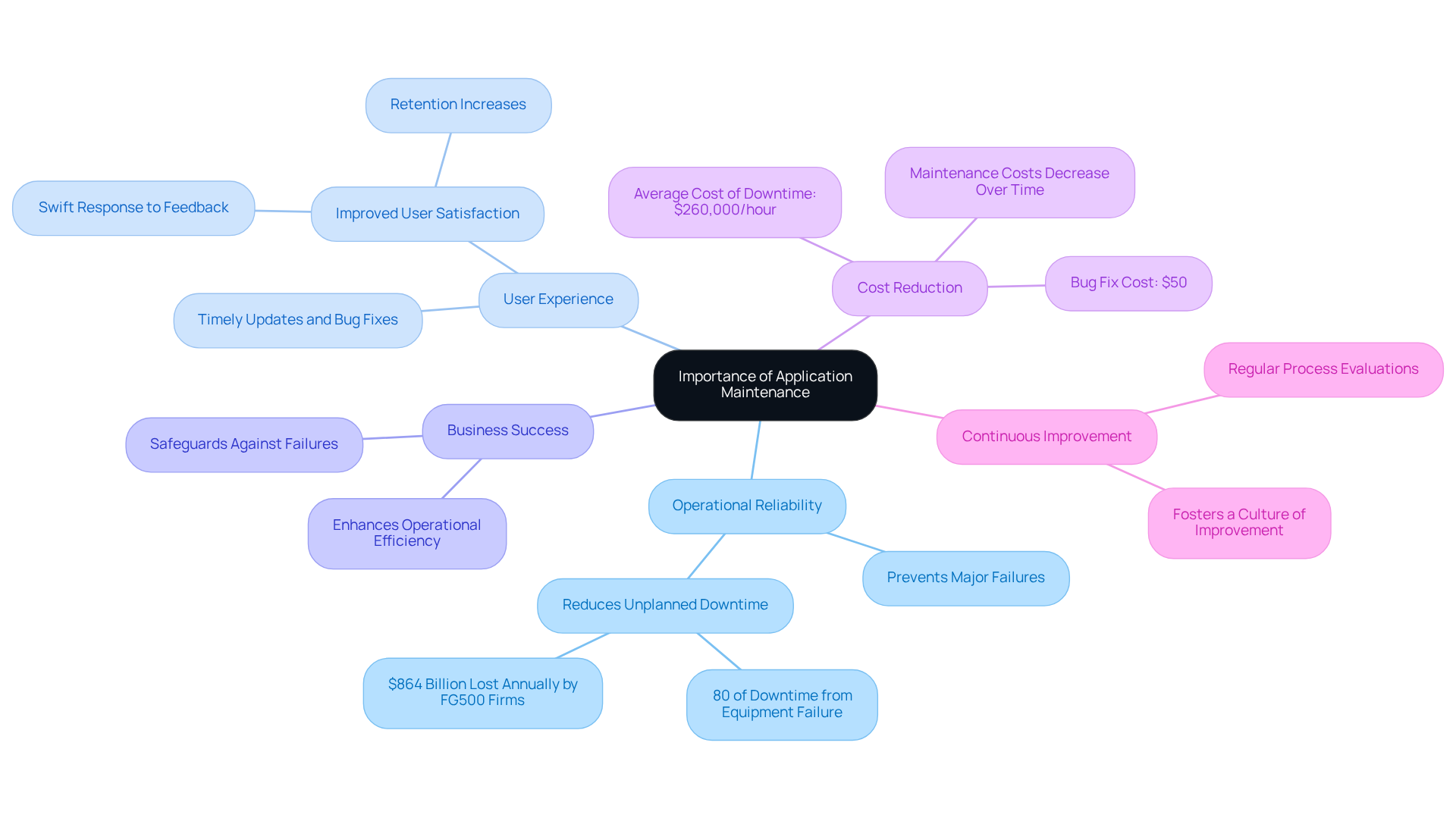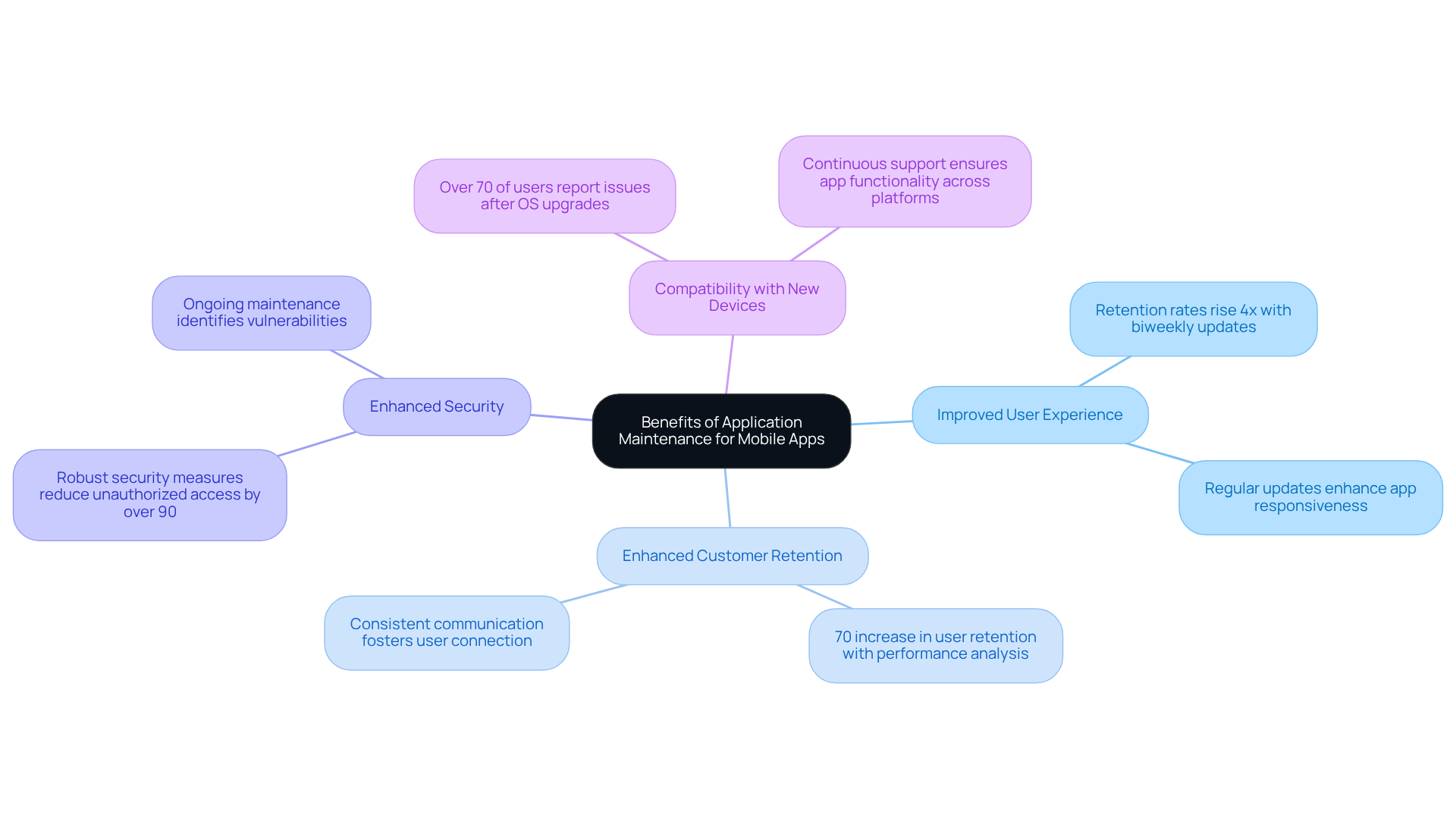AI
our blog
Understanding Application Maintenance Services and Their Importance

Overview
Application maintenance services are essential for ensuring the ongoing performance, security, and user satisfaction of software applications throughout their lifecycle. These services play a critical role in preventing significant failures and downtime, which can lead to substantial revenue losses. Thus, their importance in maintaining operational efficiency and meeting evolving technological demands cannot be overstated. Furthermore, by investing in application maintenance, organizations can safeguard their operations against unforeseen disruptions and align their software capabilities with current market needs.
Introduction
Application maintenance services are crucial in the software lifecycle, ensuring applications stay functional, secure, and aligned with user expectations. As businesses increasingly recognize the necessity of these services, demand is projected to surge, especially in sectors like finance and healthcare, where operational integrity is paramount.
However, with the rapid pace of technological advancement, organizations face the challenge of navigating the complexities of application maintenance. How can they effectively mitigate costly downtimes and enhance user satisfaction? This question underscores the importance of strategic maintenance approaches that can adapt to evolving technology landscapes.
Define Application Maintenance Services
Application maintenance services include the ongoing support, enhancement, and management of software programs, ensuring optimal performance, security, and user satisfaction throughout their lifecycle. Essential tasks include:
- Bug fixing
- Performance tuning
- Security updates
- Minor feature enhancements
In 2025, a significant proportion of firms are expected to invest in application maintenance services, as they recognize the vital role these services play in maintaining functionality and relevance in a rapidly evolving technological landscape.
Practical examples illustrate the effectiveness of maintenance support. For instance, the Banking, Financial Services, and Insurance (BFSI) sector has increasingly relied on these services to manage sensitive financial data and integrate complex Fintech solutions, thereby ensuring compliance with stringent regulations. In addition, the healthcare sector is undergoing a digital transformation, heightening the demand for management solutions that enhance service delivery and bolster cybersecurity.
Industry leaders emphasize the importance of software upkeep in development. As organizations pursue digital transformation, the necessity for robust application maintenance services becomes paramount. In fact, the global management solutions market is projected to grow significantly, with a compound annual growth rate (CAGR) of 20.22% from 2024 to 2034. This growth reflects the increasing recognition of application maintenance services as a critical investment for companies aiming to enhance operational efficiency and improve client experience.

Explain the Importance of Application Maintenance
The importance of application maintenance services is crucial for several compelling reasons. Application maintenance services ensure that applications remain operational and secure, adapting to evolving technologies and audience expectations. Routine maintenance, as part of application maintenance services, serves as a proactive measure that helps prevent major failures, which can lead to significant downtime and considerable revenue losses—averaging $260,000 per hour for companies.
Furthermore, application maintenance services that include timely updates and bug fixes enhance user experience by addressing performance issues that could otherwise lead to frustration and attrition. In fact, businesses that prioritize application maintenance services often witness improved user satisfaction and retention, as they can swiftly respond to user feedback and market demands.
In today's competitive landscape, application maintenance services are essential for maintaining the relevance and reliability of software, which is crucial for sustained business success. For instance, organizations that utilize application maintenance services can significantly reduce unplanned downtime, a major factor in lost productivity and revenue.
Expert insights indicate that investing in application maintenance services not only safeguards against potential failures but also fosters a culture of continuous improvement, ultimately enhancing overall operational efficiency.

Outline Types of Application Maintenance Services
Application maintenance services include several critical types, each serving a unique purpose to ensure optimal application performance.
-
Corrective Maintenance focuses on identifying and fixing bugs and defects, ensuring that the application operates smoothly. Statistics suggest that effective corrective actions can significantly enhance productivity and minimize downtime, with some organizations reporting up to 80% efficiency in addressing issues promptly. In the transportation sector, for example, corrective upkeep represents 25% of repair activities, emphasizing its significance in operational efficiency.
-
Adaptive Maintenance involves modifying software to maintain compatibility with new environments or technologies. As industries evolve, adaptive maintenance becomes essential for integrating updates and ensuring seamless functionality across platforms.
-
Perfective Maintenance improves software by incorporating new features or enhancing current functionalities based on feedback from individuals. By continuously enhancing software, organizations can better meet user needs and improve overall satisfaction.
-
Preventive Maintenance aims at preventing potential issues through regular checks and updates. Preventive upkeep generally represents 60% to 80% of all servicing tasks, assisting in reducing unforeseen failures and prolonging the system's lifespan. The benefit-to-cost ratio for preventative upkeep is approximately 3.3, demonstrating its effectiveness in reducing long-term expenses.
Every form of application maintenance services is essential in preserving the overall health and performance of systems, ensuring they remain effective and aligned with business goals. Key metrics such as Mean Time Between Failures (MTBF) and Mean Time To Repair (MTTR) are also essential for evaluating maintenance effectiveness.

Highlight Benefits of Application Maintenance for Mobile Apps
The success of mobile applications relies on application maintenance services that provide essential benefits.
-
Improved User Experience: Regular updates and bug fixes are vital for delivering a seamless and enjoyable experience. Research indicates that applications updated biweekly can experience retention rates rising four times compared to those updated less frequently. This underscores the importance of keeping the interface vibrant and responsive to user needs.
-
Enhanced Customer Retention: Promptly addressing issues and introducing new features can significantly engage customers and reduce churn rates. For instance, applications that analyze performance data can see a 70% increase in user retention. Furthermore, consistent communication regarding updates fosters a sense of care and connection, further enhancing retention.
-
Enhanced Security: Ongoing maintenance is critical for identifying and resolving vulnerabilities, thereby safeguarding data and ensuring compliance with regulations. Implementing robust security measures can reduce unauthorized access by over 90%, which is essential for maintaining customer trust and satisfaction.
-
Compatibility with New Devices: As new devices and operating systems emerge, continuous support ensures that applications remain functional and optimized across all platforms. This adaptability is crucial, as over 70% of users report issues following operating system upgrades, making it imperative for applications to stay current.
Collectively, these benefits contribute to the long-term success of mobile applications, reinforcing the necessity for application maintenance services as a proactive strategy.

Conclusion
Application maintenance services are essential for the ongoing success and functionality of software applications. By delivering vital support, enhancement, and management, these services ensure that applications remain secure, efficient, and aligned with user expectations. As organizations increasingly acknowledge the significance of these services, particularly in a rapidly evolving technological landscape, investing in application maintenance becomes a strategic imperative for sustained business success.
Key points have been highlighted throughout the discussion, including the various types of maintenance services:
- Corrective
- Adaptive
- Perfective
- Preventive
Each playing a crucial role in ensuring software reliability. The benefits of application maintenance, particularly for mobile apps, have also been emphasized, illustrating how regular updates, improved user experiences, and enhanced security contribute to higher customer retention rates and operational efficiency. Furthermore, the projected growth of the application maintenance market underscores the rising recognition of its importance across industries.
The value of application maintenance services cannot be overstated. As businesses strive to enhance their operational capabilities and adapt to evolving user needs, prioritizing these services is essential. Organizations should view application maintenance not merely as a cost but as a crucial investment in their long-term success, ensuring that their software remains relevant, secure, and capable of meeting the demands of the future.









